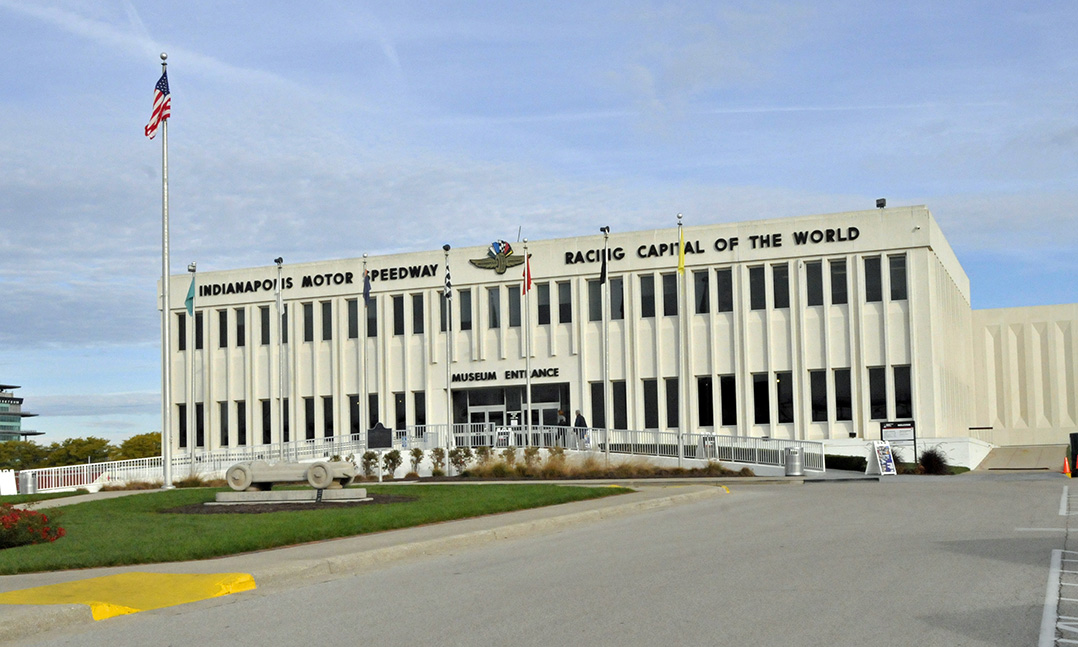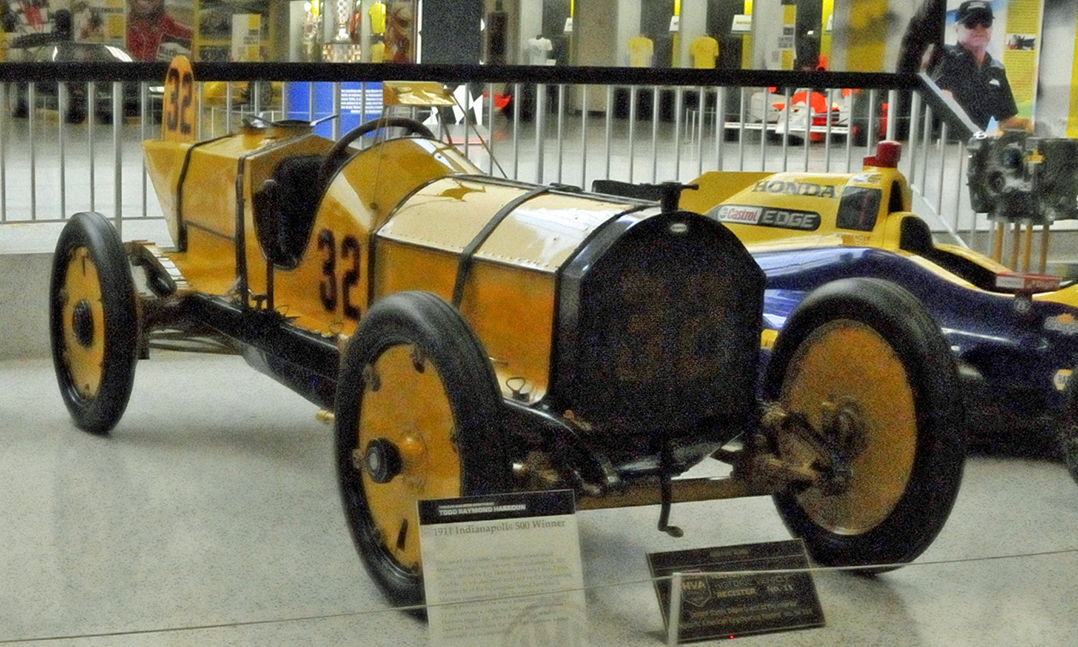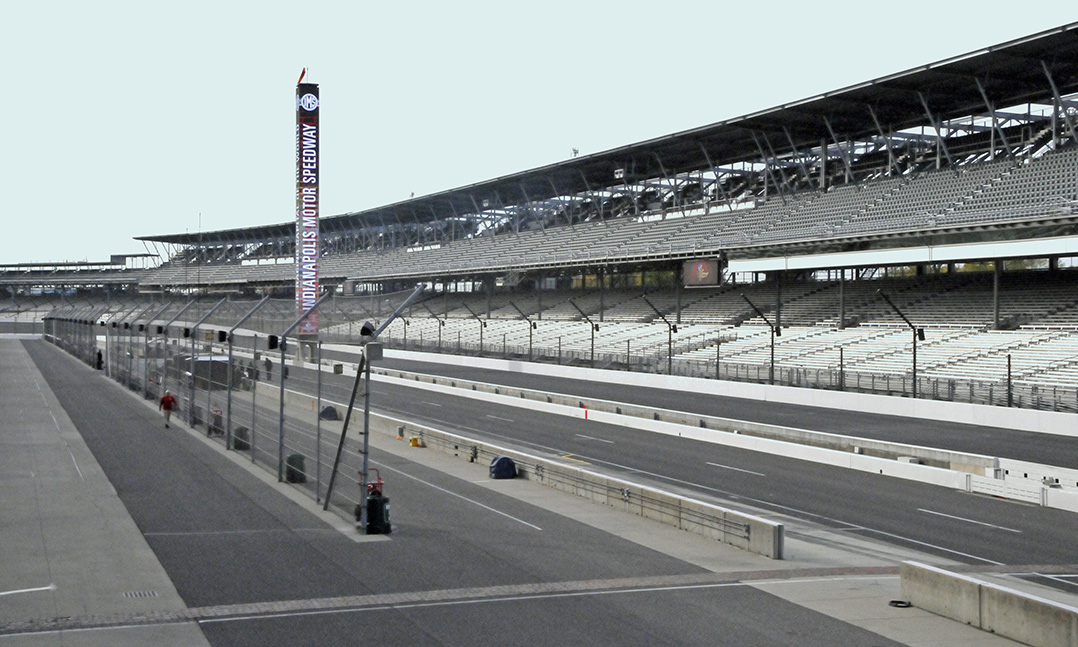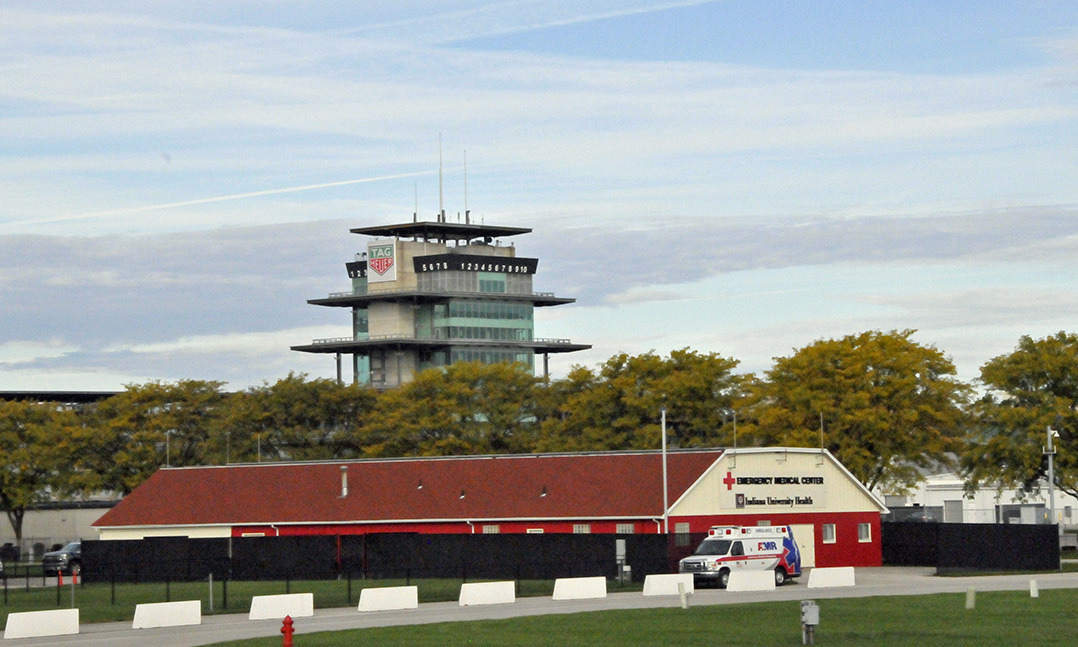Encompassing 560 acres, the Indianapolis Motor Speedway, located in Speedway, is the world’s largest sports venue and hosts the world’s largest single-day sporting event. Named a National Historic Landmark in 1987, it was and remains important to the Indianapolis economy.
Carl Fisher and James Allison owned an Indianapolis company producing automobile headlights.During a trip to Europe, Fisher concluded that European automobiles were better than their American counterparts and decided to build a facility to encourage and test American innovations. In 1909, with financial assistance from Allison and others, he built a 2 1/2-mile racetrack 5 miles northwest of Indianapolis. During races that year, the crushed stone surface proved dangerous and racing was suspended. Racing resumed after the track was paved with 3.2 million Indiana bricks. On Memorial Day in 1911, 80,000 spectators watched Ray Harroun win the first 500-mile race, piloting the Marmon Wasp, assembled in Indianapolis, at an average speed of 74.602 mph. The race attracted other automobile manufacturers to Indianapolis, including Cole, Duesenberg and Stutz. In 1927, Fisher and Allison sold the facility to World War I flying ace Eddy Rickenbacker. In 1945, after not being used during World War II, Rickenbacker sold it to Tony Hulman, a Terre Haute businessman. During the next 75 years, the Hulman family made enormous improvements to the facility, including building the “Pagoda,” a 10-story control tower and media center evoking early designs. A corporation owned by Roger Penske, a legend in auto racing, purchased the property in 2020.
Except for a yard of bricks at the start/finish line, the track is now covered with asphalt, but is still “The Brickyard.” The Speedway Museum, operated by a nonprofit foundation, displays about 75 cars that have participated in the Indianapolis 500, including the Marmon Wasp, and offers tours of the track and its facilities.






